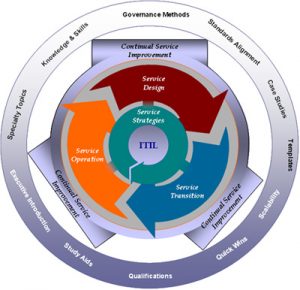What is ITIL Service Delivery? – BMC Blogs
This blog post walks you through what ITSM and ITIL are, what an IT Service is, what types of services are available, and the evolution of ITIL service delivery.
IT Service Management (ITSM) are the plans, activities, and processes an organization used to design, deliver, and manage service delivery for its customers.
The Information Technology Infrastructure Library (ITIL) is a framework for implementing ITSM and the framework is based on a set of best practices evolved from experience.
An IT service, as described in ITIL v3 framework, is “a means of delivering value to customers by facilitating outcomes customers want to achieved without the ownership of specific costs and risks.” In other words, delivering something customers value where the customer cannot or does not want to own and perform itself.
Four categories of IT services are described: business process services, IT skill services, application services, and infrastructure services.
The final definition of ITIL service delivery in the post is:
ITIL service delivery occurs when an IT organization performs an IT service for a customer (business process, IT skills, application, or infrastructure service) that the customer values and desires and that the customer cannot or does not want to own and perform itself. Services are designed, deployed, delivered, improved, and retired by using the ITIL v3 service lifecycle.
Click the link to read the full article.
Source: What is ITIL Service Delivery? – BMC Blogs
[Featured image courtesy of Flickr: Poptech]

![ImplementITSM_SteelBlue_2Lineext_LogoEnfold-340x156px-3.1[1] BMC Helix Experts for DSOM, Helix ITSM, Digital Workplace Catalog, Discovery, and AIOps - Implement ITSM](https://implementitsm.com/wp-content/uploads/2022/08/ImplementITSM_SteelBlue_2Lineext_LogoEnfold-340x156px-3.11.png)
